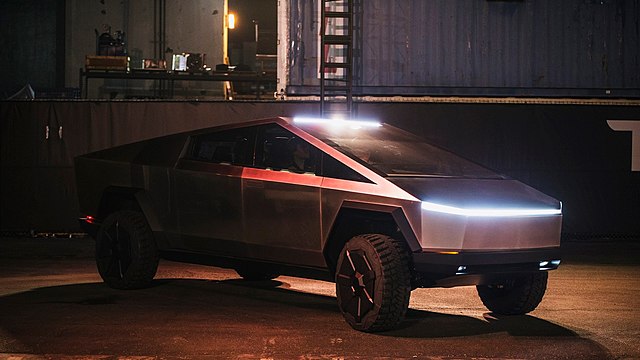One of the most hyped vehicles for the 2024 model year is the Tesla Cybertruck, Elon Musk’s rendition of the classic American pickup that looks like it was sculpted with a hammer and chisel. While its appearance is certainly interesting, the truck is far from practical for anyone who plans to use a truck to do typical “truck stuff.” The Cybertruck is just the latest in a relatively small but burgeoning line of electric pickups that all lack true truck credibility.
One of the biggest problems with most electric vehicles, trucks included, is that they are simply too expensive. The lower range trim of the 2024 Ford F-150 Lightning, Ford’s electric pickup, costs around the same as a middle-of-the-range gas-powered F-150 with extra options included.
It is also worth mentioning that many dealerships do not offer these electric models at MSRP, but instead mark them up so that they cost even more. This price gouging further increases the disparity in price between gas and electric models.
Also, most manufacturers only provide a charger that plugs into a typical wall outlet and only adds two to five miles of range every hour. While a customer can upgrade to a more powerful charging system, this often requires having a specialized outlet installed, which takes more time and money. For anyone using a truck for long trips, towing, or hauling, this is incredibly impractical when a trip to the gas station can take less than 10 minutes.
There is more bad news for anyone interested in using an electric truck for work or recreation.
First of all, the market is very new and customers only have about four options, three of which do not start under $69,000, which makes them far from practical for many. The cheapest full-size truck on the market is the Ford F-150, which starts at $36,770.
Out of the four electric models, the one with the best range is the GMC Hummer EV, which can travel about 381 miles on a single charge. This is also the most expensive truck. The base model F-150, however, even with the smallest gas tank and doing all city driving, has an estimated range of 460 miles from one full tank of gas.
The base model Ford also has a greater payload capacity, and the non-base model F-150 has a greater max towing capacity. In just about every category, a little half-ton gas-powered pickup bests the futuristic electric trucks of tomorrow.
Many truck owners live in places where the weather gets cold or use their trucks to travel to such places. Another concern about electric pickups is the battery draining in cold weather. According to midtronics.com, freezing weather can drain an electric vehicle battery by up to 60 percent.
For people who use their truck for work, waking up the next morning after a cold snap could impact their ability to do their job. It seems incredibly impractical to use a vehicle that may not function because of the weather when every gas pickup will start right up in the cold.
Ultimately, electric trunks are only practical for the urban customer who uses the truck to drive to the office or run errands. Their unorthodox designs, subpar towing and hauling performance, and limited range mean that most of these trucks will be purchased by young urban hipsters whose only use for the bed is to haul more Whole Foods purchases.
Those who want the familiar looks, usability, and cost-effectiveness of a true pickup should hold off on purchasing an electric truck until the market grows more.














